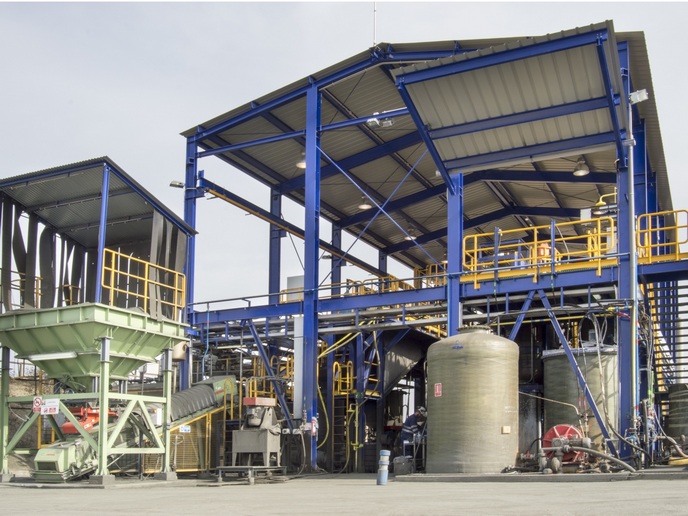The future of mining is now: valorising mine waste and re-using water
Critical raw materials (CRMs) are not necessarily scarce. They are of high economic importance for key sectors, have a high supply risk due to import dependence, and do not have viable substitutes. The transition to digital and green technologies is putting CRMs increasingly in the spotlight and the official list of them is growing. Although Europe has negligible mining of CRMs, it has many active and abandoned mines for other minerals whose ‘extractive waste’ – materials discarded because they are not considered valuable – may contain valuable CRMs. To support a circular economy model for mining, the EU-funded RAWMINA project developed an industrially scalable mine waste valorisation pilot that also slashes water consumption.
Supporting valorisation of Europe’s untapped potential
Mine waste is often stored in large volumes without any treatment, leaving valuable metals unrecovered and posing environmental hazards due to contamination of the local environment. RAWMINA strategically focused on antimony (Sb), cobalt (Co), germanium (Ge), and tungsten (W). These CRMs are essential for many high-tech applications and the growth of Europe’s technology, business and manufacturing sectors. “Currently exploited Sb, Co, Ge and W reserves within the EU represent a small percentage of the total reserves available. Additional reserves at existing deposits are continuously being identified, and the EU’s progressive discovery of new deposits has opened additional exploration potential,” notes Diego Morillo of LEITAT, and RAWMINA’s technical coordinator.
Innovative processing for a circular economy in CRM mining
RAWMINA embraced circular economy principles by transforming mine waste into valuable products and reusing process water. “Innovations include continuous bioleaching using microorganisms for efficient metal extraction, and selective metal recovery technologies leveraging nanofibrous composite materials, thermo-desorption, electrowinning, and electrocoagulation,” Morillo explains. In addition, magnetic separation enables iron removal to convert iron waste into high-value products. A closed-loop water recirculation system reuses water and reduces waste. According to Morillo, “After industrial implementation, the RAWMINA system will enable reducing mine waste generation by 95 % and reusing 90 % of the processing water. This reduces environmental harm, conserves resources and promotes sustainable industrial practices.”
Scalable technologies and societal support
The RAWMINA pilot system is ready and can treat 100-150 kilograms of mine waste per day, achieving high recovery rates and selectivity for CRMs and high-value products. Furthermore, RAWMINA’s adaptable process technologies are suitable for various global locations. “RAWMINA has successfully demonstrated the feasibility of a continuous and industrially scalable pilot system that combines multiple innovative technologies for efficient and sustainable metal recovery from mine waste. This sets a new standard for the mining industry and underscores the potential for circular economy practices,” Morillo says. The project not only advanced technical innovations but also emphasised the importance of societal acceptance and public awareness. “By fostering dialogue with stakeholders and the public, we aim to build trust and support for sustainable mining practices and encourage international cooperation and market development. Additionally, the project's commitment to ethical, transparent and inclusive research sets a positive example for future initiatives in the sector,” notes Morillo. RAWMINA is contributing to the security of Europe’s CRM supply and the sustainability of its mining sector. Furthermore, it has taken a step towards a future in which mining becomes redundant, with demand met by the resources already in circulation.
Keywords
RAWMINA, mining, CRMs, mine waste, circular economy, critical raw materials, mines, bioleaching, nanofibrous composite materials, valorisation, water recirculation



